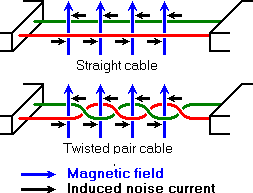Serial, RS485: Difference between revisions
Wvengineer (talk | contribs) |
Wvengineer (talk | contribs) |
||
| Line 3: | Line 3: | ||
EIA-485 only specifies electrical characteristics of the driver and the receiver. It does not specify or recommend any data protocol. EIA-485 enables the configuration of inexpensive local networks and multidrop communications links. It offers high data transmission speeds (35 Mbit/s up to 10 m and 100 kbit/s at 1200 m). Since it uses a differential balanced line over twisted pair (like EIA-422), it can span relatively large distances (up to 4000 feet or just over 1200 metres). | EIA-485 only specifies electrical characteristics of the driver and the receiver. It does not specify or recommend any data protocol. EIA-485 enables the configuration of inexpensive local networks and multidrop communications links. It offers high data transmission speeds (35 Mbit/s up to 10 m and 100 kbit/s at 1200 m). Since it uses a differential balanced line over twisted pair (like EIA-422), it can span relatively large distances (up to 4000 feet or just over 1200 metres). | ||
Here is an image showing balanced differential communications where noise that is induced is canceled out be the opposite pair | |||
[[Image:Twisted_immunity.png]] | |||
==External links== | ==External links== | ||
*[http://en.wikipedia.org/wiki/EIA-485 EIA-485 From Wikipedia] | *[http://en.wikipedia.org/wiki/EIA-485 EIA-485 From Wikipedia] | ||
*[http://www.lammertbies.nl/comm/info/RS-485.html Introduction to RS485] | *[http://www.lammertbies.nl/comm/info/RS-485.html Introduction to RS485] | ||
Revision as of 15:02, 17 March 2009
Overview
RS-485 is very similar to RS-422 where it is balanced pair communications in order to archive long distances with minimal or no noise introduced into the data.
EIA-485 only specifies electrical characteristics of the driver and the receiver. It does not specify or recommend any data protocol. EIA-485 enables the configuration of inexpensive local networks and multidrop communications links. It offers high data transmission speeds (35 Mbit/s up to 10 m and 100 kbit/s at 1200 m). Since it uses a differential balanced line over twisted pair (like EIA-422), it can span relatively large distances (up to 4000 feet or just over 1200 metres).
Here is an image showing balanced differential communications where noise that is induced is canceled out be the opposite pair
